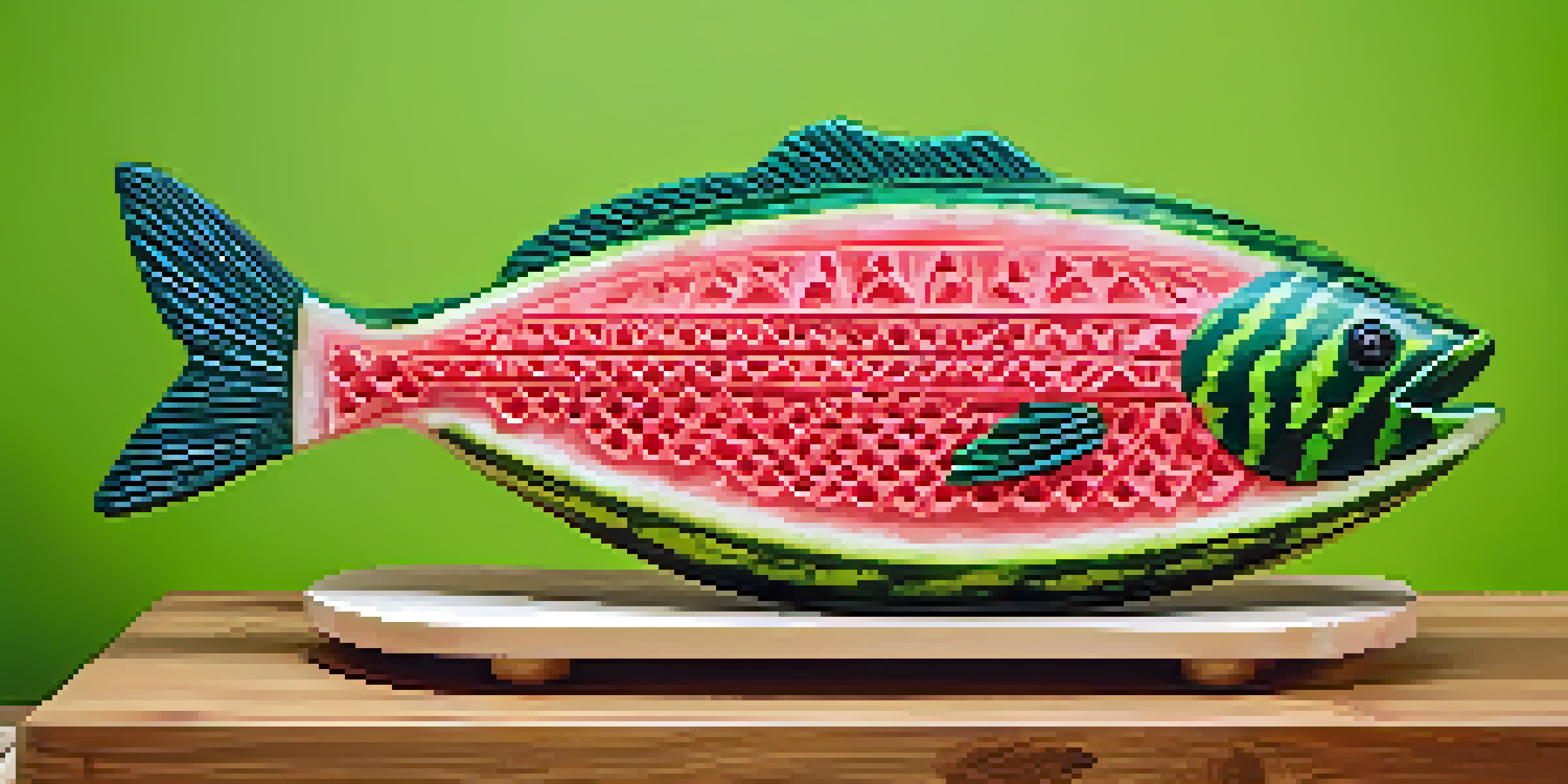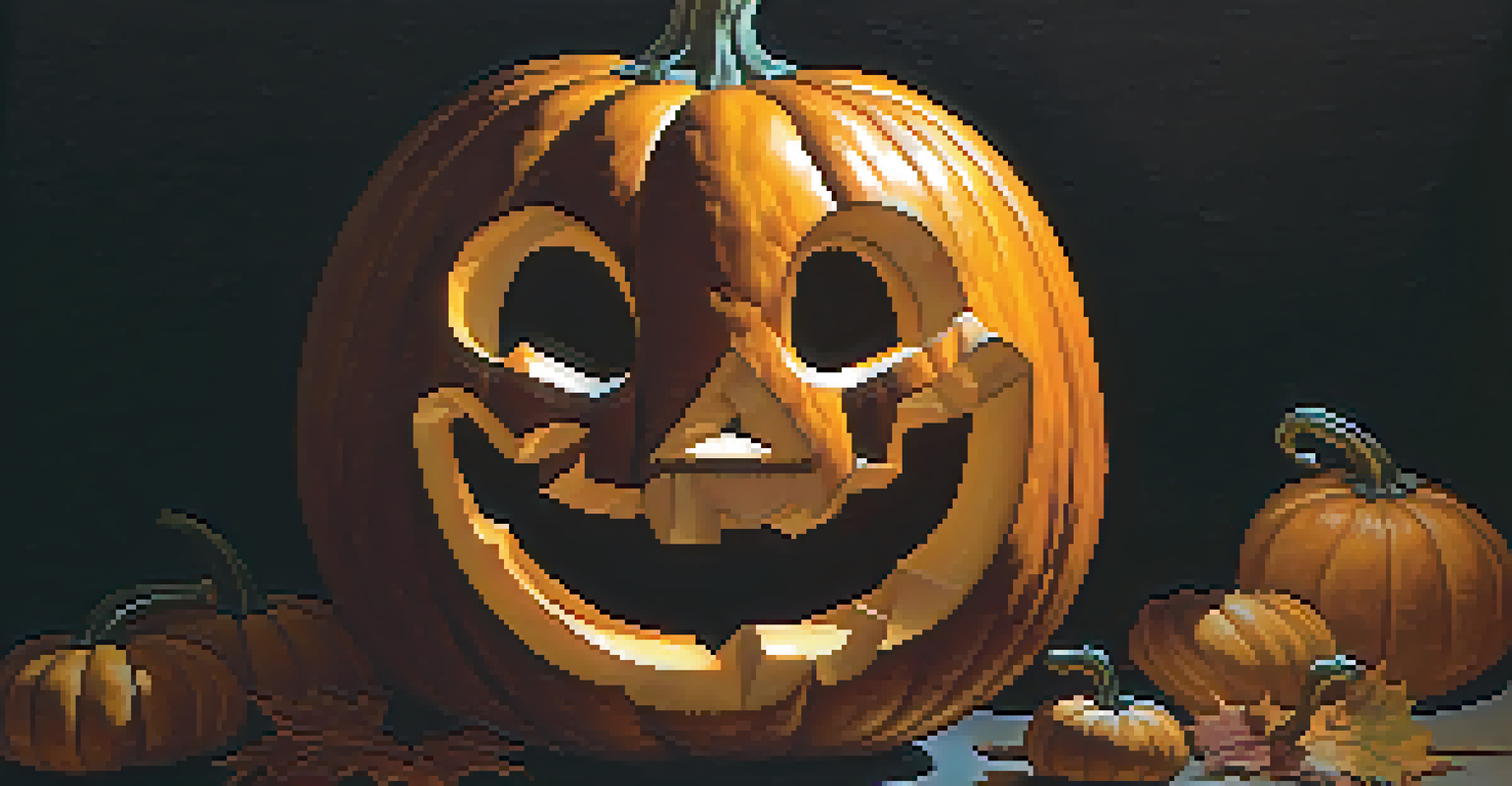Food Carving Competitions: Tips for Aspiring Carving Artists

Understanding the Art of Food Carving
Food carving is much more than just cutting fruits and vegetables; it’s a form of art that transforms edible items into stunning creations. Think of it as sculpting, where your medium is fresh produce instead of stone or clay. This artistic expression allows carvers to showcase creativity and precision, often leaving spectators in awe of the intricate designs.
Food is art and art is food.
Competitions take this art to another level, providing a platform for carvers to demonstrate their skills and gain recognition. Each piece can tell a story, evoke emotions, or simply serve as a delightful centerpiece at an event. Understanding the fundamentals of food carving is crucial for anyone looking to participate in these competitions.
As you embark on this journey, remember that practice is key. The more you carve, the more comfortable you will become with your tools and techniques. Embrace the learning process, and don’t be afraid to make mistakes—they often lead to the best discoveries.
Gathering the Right Tools for Carving
Having the right tools can make all the difference in food carving. Essential tools include sharp knives, carving tools, and a sturdy cutting board. Each tool serves a specific purpose, and investing in quality equipment can enhance your carving experience tremendously.

For beginners, consider starting with a basic set that includes a paring knife and a carving knife. As you advance, you might want to explore more specialized tools like melon ballers or even decorative carving knives. Remember, the tool should feel comfortable in your hand—this will help you carve with precision and ease.
Food Carving is an Art Form
Food carving transforms fruits and vegetables into stunning creations, showcasing creativity and precision.
Keep your tools sharp and clean to ensure the best results. Dull knives can lead to accidents and uneven cuts, which can be frustrating when you’re aiming for perfection. Regular maintenance of your tools not only ensures safety but also extends their lifespan.
Choosing the Right Fruits and Vegetables
Selecting the right fruits and vegetables is crucial for successful food carving. Ideally, you want produce that is firm and has a smooth surface, which will make carving easier and yield better results. Common choices include watermelon, pumpkins, and cucumbers—each offering unique textures and colors.
The best way to predict the future is to create it.
Look for items that are in season, as they tend to be fresher and more vibrant. For instance, during summer, melons are ripe and perfect for intricate designs. Additionally, consider the color palette of your chosen produce; contrasting colors can make your carving stand out and be more visually appealing.
Don't shy away from experimenting with less common fruits and vegetables. Unusual shapes and textures can inspire creativity and set your work apart from others. The key is to have fun while discovering what works best for your carving style.
Mastering Basic Carving Techniques
Before diving into complex designs, it's essential to master basic carving techniques. Start with simple shapes and gradually progress to more intricate patterns. Techniques like peeling, slicing, and sculpting are foundational skills that every carver should practice.
YouTube and various online platforms offer countless tutorials that can guide you through the learning process. Watching experienced carvers can provide insights into their methods and tips, making your learning curve much smoother. Remember to take notes and practice regularly to build your confidence.
Essential Tools Enhance Carving
Having the right tools, such as sharp knives and carving accessories, significantly improves the carving experience.
As you become more comfortable with basic techniques, you can begin to experiment with combining them to create unique designs. The more you practice, the more your personal style will emerge, allowing you to develop your signature carving flair.
Planning Your Competition Piece
When preparing for a food carving competition, planning is essential. Start by brainstorming ideas and sketching out your designs on paper. Visualizing your final piece will help you determine the necessary steps and tools you will need.
Consider the theme of the competition, as it may guide your design choices. For instance, if the theme is 'Under the Sea,' a carved fish or a mermaid made from fruits could be a perfect fit. Planning your piece ahead of time ensures you stay focused and organized during the carving process.
Don’t forget to time yourself during practice runs. Knowing how long it takes to complete your carving will help you manage your time effectively during the actual competition. This preparation can alleviate stress and allow you to enjoy the experience.
Perfecting Your Presentation Skills
Presentation is just as important as carving itself. A well-carved piece deserves to be displayed beautifully. Think of your presentation as the frame to a painting—it enhances the overall impact of your work. Consider using garnishes or complementary items to elevate your display.
When showcasing your piece, pay attention to the arrangement and colors. Make sure it’s visually balanced and highlights the key features of your carving. Using a simple backdrop can also add depth and draw attention to your creation without distracting from it.
Practice and Planning are Key
Regular practice and careful planning prior to competitions help build confidence and improve overall performance.
Practice explaining your carving technique and design choices clearly. Being able to articulate your process can impress judges and spectators alike. This not only showcases your skill but also your passion for the art of food carving.
Staying Calm and Confident During the Competition
Competitions can be nerve-wracking, but staying calm is key to performing your best. Take deep breaths and remind yourself that you’ve prepared thoroughly. Confidence can have a significant impact on your performance, so embrace the skills you’ve developed through practice.
Maintaining a positive mindset can help you navigate any unexpected challenges during the competition. If something doesn’t go as planned, adapt and keep going. Remember, every great artist faces obstacles; it’s how you respond that makes the difference.

Engage with other competitors and enjoy the camaraderie. Sharing experiences and learning from one another can make the competition more enjoyable. In the end, the goal is to showcase your talent and passion, so have fun with it!